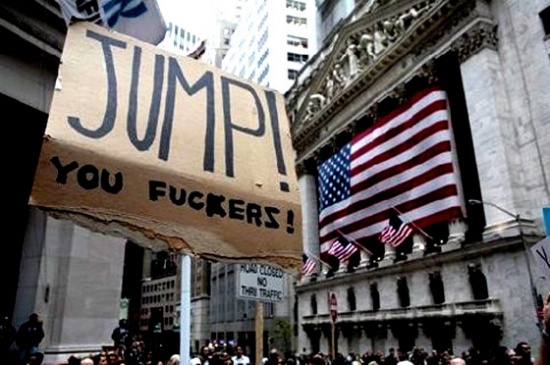By almost any measure, 2008 was a complete disaster for Wall Street — except, that is, when the bonuses arrived.
Despite crippling losses, multibillion-dollar bailouts and the passing of some of the most prominent names in the business, employees at financial companies in New York, the now-diminished world capital of capital, collected an estimated $18.4 billion in bonuses for the year.
Some bankers took home millions last year even as their employers lost billions.
The state comptroller, Thomas P. DiNapoli, said it was unclear if banks had used taxpayer money for the bonuses, a possibility that strikes corporate governance experts, and indeed many ordinary Americans, as outrageous. He urged the Obama administration to examine the issue closely.
“The issue of transparency is a significant one, and there needs to be an accounting about whether there was any taxpayer money used to pay bonuses or to pay for corporate jets (see Citigroup Likely to Face Criticism Over Jet, New York Times, Jan 26) or dividends or anything else,” Mr. DiNapoli said in an interview.
Lucian A. Bebchuk, a professor at Harvard Law School and expert on executive compensation, called the 2008 bonus figure “disconcerting.” Bonuses, he said, are meant to reward good performance and retain employees. But Wall Street disbursed billions despite staggering losses and a shrinking job market.
“This was neither the sixth-best year in terms of aggregate profits, nor was it the sixth-most-difficult year in terms of retaining employees,” Professor Bebchuk said.
Echoing Mr. DiNapoli, Professor Bebchuk said he was concerned that banks might be using taxpayer money to subsidize bonuses or dividends to stockholders. “What the government has been trying to do is shore up capital, and any diversion of capital out of banks, whether in the form of dividends or large payments to employees, really undermines what we are trying to do,” he said.
Bonuses paid by one troubled Wall Street firm, Merrill Lynch, have come under particular scrutiny during the last week.
Andrew M. Cuomo, the New York attorney general, has issued subpoenas to John A. Thain, Merrill’s former chief executive, and to an executive at Bank of America, which recently acquired Merrill, asking for information about Merrill’s decision to pay $4 billion to $5 billion in bonuses despite new, gaping losses that forced Bank of America to seek a second financial lifeline from Washington.
From the New York Times, January 29
Maureen Dowd wrote:
As President Obama spreads his New Testament balm over the capital, I’m longing for a bit of Old Testament wrath.
Couldn’t he throw down his BlackBerry tablet and smash it in anger over the feckless financiers, the gods of gold and their idols — in this case not a gilt calf but an $87,000 area rug, a cache of diamond Tiffany and Cartier watches and a French-made luxury corporate jet?
she added:
Senator [Carl] Levin said that the financiers will not be able to change their warped mentality, but will have to be reined in by Geithner’s new leashes. “I have no confidence that they intend or desire to change,” Levin told me. “These bankers got away with murder, and it’s obscene that close to nothing is being asked of financial institutions. I get incensed at the thought that a bank that’s getting billions of dollars in taxpayer money is out there buying fancy new airplanes.”
New York’s attorney general, Andrew Cuomo, always gratifying on the issue of clawing back money from the greedy creeps on Wall Street, on Tuesday subpoenaed [John} Thain, the former Merrill Lynch chief executive, over $4 billion in bonuses he handed out as the failing firm was bought by Bank of America.
[Maria] Bartiromo… asked Thain to explain, when jobs and salaries were being cut at his firm, how he could justify spending $1 million to renovate his office. As The Daily Beast and CNBC reported, big-ticket items included curtains for $28,000, a pair of chairs for $87,000, fabric for a “Roman Shade” for $11,000, Regency chairs for $24,000, six wall sconces for $2,700, a $13,000 chandelier in the private dining room and six dining chairs for $37,000, a “custom coffee table” for $16,000, an antique commode “on legs” for $35,000, and a $1,400 “parchment waste can.”
and finally:
How are these ruthless, careless ghouls who murdered the economy still walking around (not to mention that sociopathic sadist Bernie Madoff?) — and not as perps?
Bring on the shackles. Let the show trials begin.
http://www.nytimes.com/2009/01/28/opinion/28dowd.html
For surprise denoument… …
`


